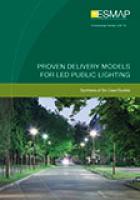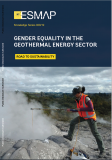Publications
Most public lighting is concentrated in cities, where it can constitute up to 65 percent of municipal electricity budgets. Compared to alternative forms of public lighting, LED luminaries consume less electricity, have longer life cycles, and provide better quality lighting. Despite the benefits, many municipalities are unsure of how to implement an LED lighting program.
This synthesis report summarizes the cross-cutting findings from the six case studies, which document real-life experiences, challenges, and solutions encountered in implementing different LED lighting delivery models—ESCO, super-ESCO, joint procurement, public-private partnership, lease-to-own, and municipal financing. Crosscutting findings include various key roles played by governments, ranging from setting policies that support LED lighting programs to establishing an ESCO with a mandate to implement energy efficient programs while transforming the market.
The report also highlights distinct ways used to mitigate technical, financial, and performance risks by the cities. These span from requiring third-party product test results to completely outsourcing the lighting infrastructure and procuring lighting as a service. It also highlights the importance of strategically engaging stakeholders—such as international partners, local utilities, non-profit groups, to name but a few—as the program advances.
Download Case Studies:
ESMAP | Energy Efficient Cities | Achievements | Publications | News | Blogs | Lighting Transformation Initiative
ESMAP (Energy Sector Management Assistance Program). 2016. Proven Delivery Models for LED Public Lighting: Synthesis of Six Case Studies. ESMAP Knowledge Series 026/16. Washington, DC: World Bank. https://openknowledge.worldbank.org/handle/10986/25336 License: CC BY 3.0 IGO.









